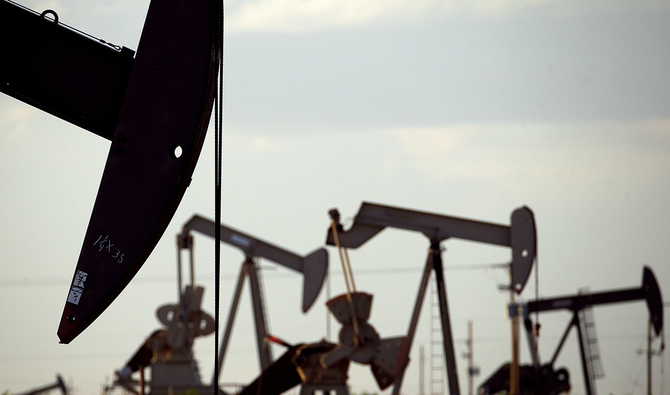
- ARAB NEWS
- 17 Jul 2025

All good things come to an end. The oil rally stretched from the fatal week when West Texas Intermediate temporarily turned negative in April until the middle of last week. On June 5, Brent briefly pierced the $42 per barrel mark, reaching highs not seen since early March.
OPEC+, an alliance of the 13 members of the Organization of the Petroleum Exporting Countries (OPEC) with their 10 allies led by Russia, did its bit by agreeing to production cuts of 9.7 million barrels per day (bpd) as of May 1, and extended them further for an additional month in July before going back to their downward sloping trajectory of cuts. Saudi Arabia and Russia were even able to extract promises from laggards like Iraq and Nigeria to not just adhere to the cuts, but also make up for missed quotas during the third quarter.
Brent, which had reached $41.70 on Wednesday fell to $37.40 by Monday morning in Europe. It has recovered a little since then, reaching $38.60 per barrel by mid-day CET.
The fundamentals remained on the strong side with economies opening up and travel restrictions easing — particularly in the EU. On the negative side, crude inventories rose by 5.7 million barrels in the week to June 5 according to the US Energy Information Agency, reaching 538 million barrels, excluding strategic reserves. It is a record amount, and goes hand in hand with the 1 billion barrel overhang of global inventories. At the same time, there is uncertainty over where Libyan production will head, while there remains concern over the danger of relatively costly shale production coming on stream sooner rather than later, the higher the price of oil.
More importantly, the oil trade has warped into risk averse sentiment in global markets. US indexes have fallen by around 7 percent since mid-week, with the negative market outlook driven by fears of a second wave of the coronavirus disease (COVID-19). Cases have increased in California and Texas; China has seen new outbreaks in Beijing, the disease has spread in India, and new cases recorded in Brazil are steep.
Federal Reserve Chairman Jerome Powell did not help sentiment with his rather gloomy outlook on the US economy. He does not foresee a V-shaped recovery, but rather a U-shaped one, and still sees unemployment hovering around 9 percent by the end of the year.
At the same time, he stated he was concerned about permanent scars in the economy as a legacy of the pandemic, highlighting the disparity of employment prospects for low income groups and ethnic minorities.
Furthermore, the violent demonstrations that have lasted over 20 days after the killing of George Floyd at the hands of Minneapolis police did little to instill confidence in an equitable recovery in the world’s largest economy. The volatility index VIX is a good measurement of nervousness in markets; between June 9 to 11, it rose from 27.6 to 42.9.
So, what do these numbers tell us? For one, we are not out of the woods yet. As long as there is an epic overhang of global inventories, it will take cooperation from all producing the nations in OPEC+ and beyond, and even then, their actions are only one factor the equation.
A lot will depend on how demand recovers. Currently the picture is not rosy. Between the International Energy Agency and OPEC’s forecasts, the expectation is that we will see a contraction by between 8.6 and 9.1 million bpd in 2020. We will know more when the two institutions release their monthly reports.
However, in the end, demand is not in the hands of oil market experts or economic pundits, but is determined by real economic activity. In other words, all depends on the shape and speed of any recovery and whether new waves of COVID-19 will necessitate renewed lockdowns, which would have a terrible impact on economic confidence. BP’s recent asset write-down of $17.5 billion is a testament to how uncertain the longer term oil market outlook is.
The only thing we know is that we have limited visibility on these parameters, which in turn renders supply side action crucial. As far as supply is concerned, a lot will hinge on this week’s meeting by the Joint Ministerial Monitoring Committee of OPEC+, which is ably chaired by Saudi Energy Minister Prince Abdul Aziz bin Salman, and his Russian counterpart Alexander Novak.
• Cornelia Meyer is a business consultant, macro-economist and energy expert. Twitter: @MeyerResources